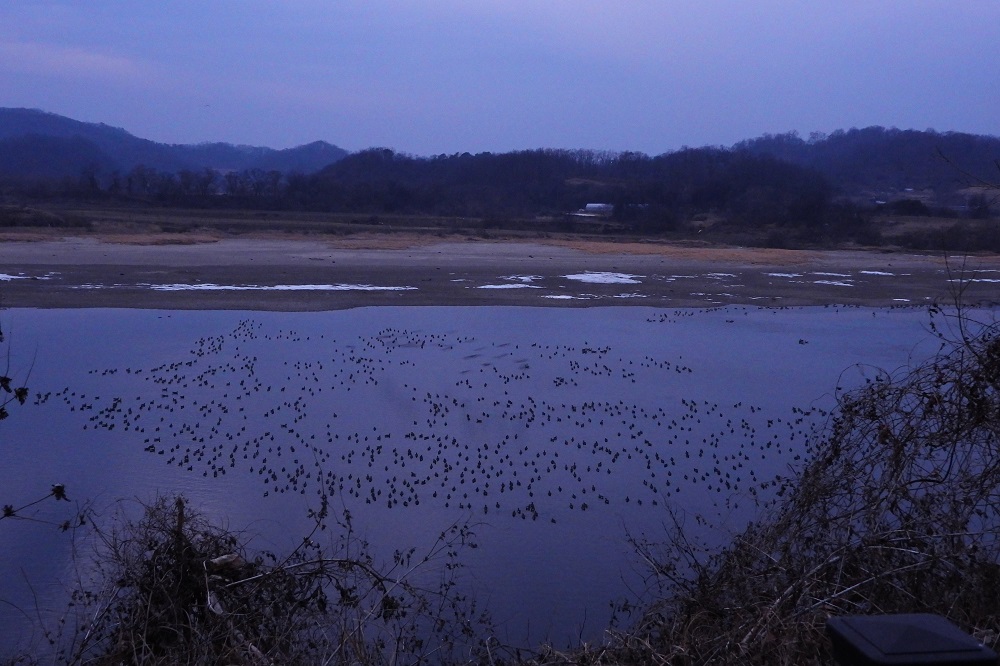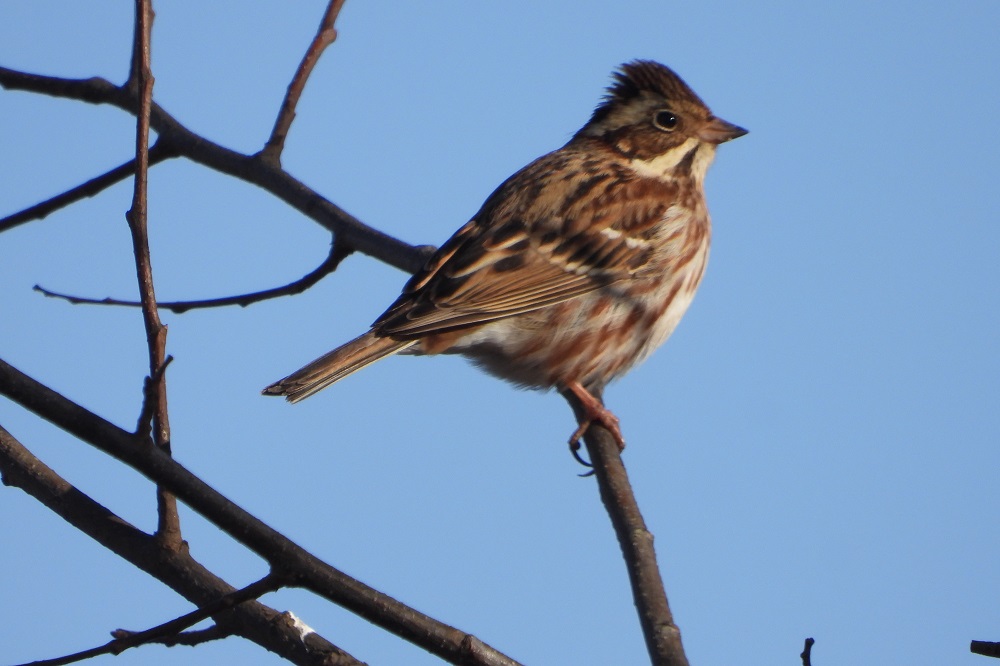Dr. Bernhard Seliger (Birds Korea, Hanns Seidel Foundation Korea)
Being driven from my home by my son’s birthday party, on December 27th, I went for a short afternoon scan (15.30-18.00), which was repeated for a longer time (07.00-15.00) and wider range a few days later, in freezing conditions, on January 2nd.
Highlights were, on the first day, 41 White-naped cranes and 8 Red-crowned cranes as well as almost 4000 geese (with more flying in after dark) roosting at the Imjinggang on December 27th, when the river was not yet completely frozen, and views of seven White-tailed sea eagles and two Cinereous vultures fighting for the rests of two unfortunate geese on the frozen river on January 2nd, plus lovely views of many small birds and single families of White-naped and Red-crowned cranes in hidden valleys close to the Imjin river. Seeing the birds in these surroundings is totally different than the spectacular, but somehow artificial, views of large groups of hundreds of cranes in places like Suncheon bay or Cheolwon. It feels much closer to the experience, Koreans must have had for hundreds of years, seeing small family groups of cranes flying over the hills and feeding in small paddies in the valleys.
Views on December 27th included:
- More than 4500 geese (species were not counted, but overwhelmingly Greater White-fronted Geese and Tundra Bean Geese)
- 41 White-naped cranes
- 8 Red-crowned cranes
- 4 White-tailed eagles
- 6 Naumann’s Thrushes
- Eastern Buzzard
- Yellow-throated buntings, Rustic buntings, Japanese Pygmy woodpeckers, Vinous-throated Parrotbills, Tree Sparrows, Common Mergansers, Spot-billed ducks, Mallards, Grey heron, Oriental Turtle dove, Brown-eared Bulbul, Great tit, Large-billed crows, Oriental Magpies
Views on January 2nd included:
- At least 2000 geese overflying and more than 1000 in the rice paddies feeding (species were not counted, but overwhelmingly Greater White-fronted Geese and Tundra Bean Geese)
- 17 White-naped cranes
- 2 Red-crowned cranes
- 8 White-tailed eagles, among them seven together at the frozen Imjin River
- 6 Cinereous vultures
- 2 Naumann’s Thrushes
- 2 Carrion crows
- Kestrel
- Hen Harrier
- At least 250 Rustic buntings (200 of them on a stretch of 3 km along the Imjin river)
- At least 85 Yellow-throated buntings
- 4 Siberian accentors
- Japanese Pygmy woodpeckers, Great Spotted Woodpecker, Bramblings, Oriental Greenfinches, Vinous-throated Parrotbills, Tree Sparrows, Common Mergansers, Common goldeneye, Spot-billed ducks, Mallards, Grey heron, Oriental Turtle dove, Brown-eared Bulbul, Great tit, Marsh tit, Varied tit, Long-tailed tit, Large-billed crows, Oriental Magpies









